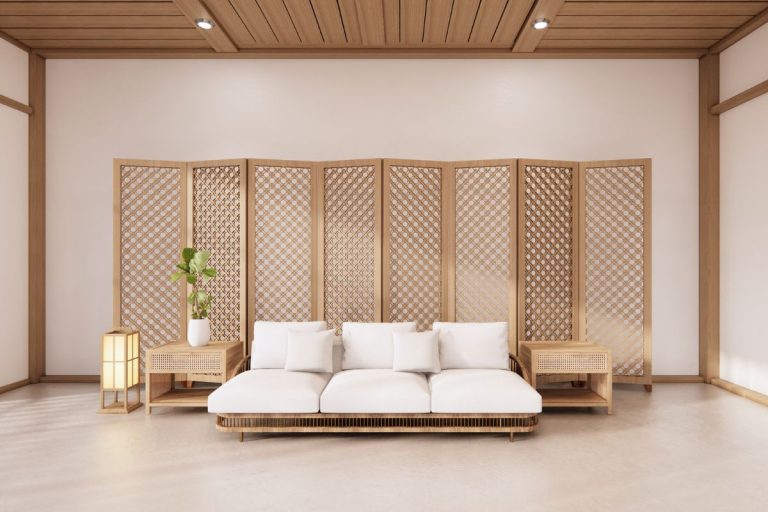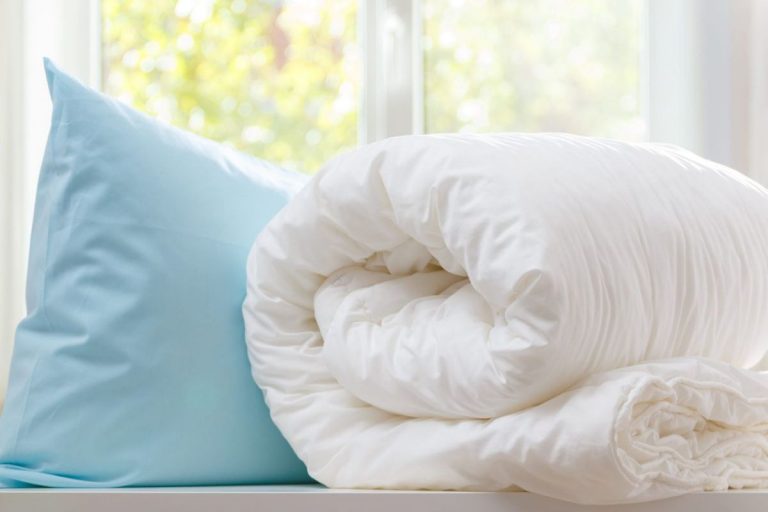A sleeping bag is a thermally insulated soft outer bag that provides warmth for a user. A sleeping bag may have a built-in foot bag for extra insulation, or it may be used with one.
If you are an outdoor enthusiast, you need to know how long sleeping bags last. If they do not keep their thermal qualities for the duration of your trip, then it will be dangerous and uncomfortable lying in one during frosty nights or days. It may also affect the quality of your sleep, which is important when adventuring outdoors; this could lead to health problems.
It’s been a while since you bought your sleeping bag. You love it, but now that it’s getting colder outside, you’re wondering how long they last. Sleeping bags are used for many years and can provide comfort all year round if taken care of properly.
Just like everything else in this world, how long something lasts depends on its build quality, materials, and maintenance. Even the best sleeping bag in the world will break somewhat quickly if you treat it like a disposable item.
If you treat it well and maintain its quality by following a few simple rules, your sleeping bag can last for decades with no trouble at all. That way, it will keep providing warmth on the coldest of nights, and you will always be comfortable in your own bed.
In this article, we will see how to keep your sleeping bag in top condition. This will help you sleep better in it. You also won’t have to replace it as often as if you treated it poorly.
How Long do Sleeping Bags Last?
Have you ever seen clothing whose fabric lasted for years and got passed down for generations? Maybe your grandpa’s hat is still cool in your area.
People will say that it’s because things used to have better quality back then. But in reality, it’s because granps cared about his things. He had to. Buying new stuff was a luxury, not a commodity.
The same happens with sleeping bags. If you buy a good-quality one and treat it well, it will serve you for years to come.
Yes, but How Long do they actually last?
If you maintain it properly and store it correctly when not in use, your sleeping bag should last for at least five years. If it’s made of high-quality materials with strong seams and stitches, then that number can be increased to over ten years.
With proper care, top-end sleeping bags can last you up to 15 years.
But even if you don’t take care of your bag, it will last for at least three years. That’s because the fabric itself is also designed to withstand many conditions and still be functional after a while.
After all, sleeping bags are built to be used in harsh conditions. They are supposed to be exposed to the elements.
What Factors Affect the Life Span of a Sleeping Bag?
There are many factors that influence how long sleeping bags last. Here’s a list of what you should pay attention to:
- Type and quality of the materials used for construction, as well as their overall build quality, including stitches and seams. A sleeping bag with poor-quality materials will tear and break quickly.
- Whether the zippers are factory-made or custom cut from fabric. Seams that have been sewn onto a piece of fabric instead of being cut from it last longer, as they’re more difficult to damage.
- Weight is another factor in how long your sleeping bag lasts. A lighter sleeping bag will get damaged easier, as the fabric won’t be able to handle too much abuse without ripping and tearing.
- Where you store your sleeping bag after use is crucial for how long it lasts. If you keep it in a dry place where there’s no moisture or humidity, then this helps make sure that mold and mildew don’t form.
- Do you keep your sleeping bag clean? Sleeping bags that are not cleaned regularly will get dirty, as dust settles on them during storage. This can cause it to break down quickly over time as the dirt seeps into the fabric and causes damage from within.
How to Maximize your Sleeping Bag’s Lifespan
Treating your sleeping bag well guarantees it’ll last you a very long time. But how do you take care of a sleeping bag?
Here’s a list of the best practices. By following these, you’ll extend your bag’s lifespan:
- Don’t store it in a damp or humid place. This increases the chance of mold and mildew growing on your sleeping bag, which can lead to damage quickly. It’s also unhygienic. Our immune system is busy building up immunity memory at night. Sleeping with mold around you is bad for your respiratory system.
- Store your sleeping bag properly so that it doesn’t get damaged or moldy. Avoid extreme temperatures. Keeping it in a storage bag, hanging it up on the right hanger and avoiding piling other pieces of gear on top of your sleeping bag are some ways to protect it.
- Don’t roll or fold your sleeping bag tightly after use. This can damage the fabric quickly, as you’ll be putting too much pressure onto specific points. Instead, store it in a way that allows it to keep its original shape.
- Use the right down wash when cleaning it. Use a hypoallergenic soap and make sure you rinse thoroughly after washing your sleeping bag, as this prevents any residue from going back into the fabric of your sleeping bag. It’s also important to dry it properly with a tumble dryer or by hanging it up to avoid any damage from the heat.
- When you go camping, always bring a sleeping bag liner with you as this can extend your sleeping bag’s lifespan significantly. This is because these liners protect the fabric and keep them clean so that they don’t get damaged quickly because of dirt seeping into the sleeping bag.
- Last, avoid getting your sleeping bag wet in the first place! Remember that a wet sleeping bag gets cold quickly and loses all its insulating properties when it’s damp. This affects how long your sleeping bag lasts as this makes it wear out quicker from ‘within’.
How to Pick a Great Sleeping Bag
Maintenance is great, but before that you should buy a high-quality sleeping bag. How do you know if a sleeping bag is of high quality?
We made a list of the factors you must check before buying a sleeping bag. Through this list, you’ll be able to find a great bag that will serve you for years to come.
Materials
Let’s talk about the materials that make up a sleeping bag. The bags’ features depend on what they are built from. The most common sleeping bags are made of:
- Down: this is the best material for a sleeping bag as it’s extremely warm but lightweight. It also compresses easily to fit into your backpack, making your load much lighter when you’re hiking. The only downside of down is that it loses its insulating properties once wet and takes longer to dry out than synthetic materials do
- Synthetics: these materials are more affordable and perform better when wet than down. However, they’re bulkier and heavier in your backpack because of this. On the plus side, it’s easy to wash synthetic sleeping bags compared to others
- Primaloft: this material is very lightweight but works best when paired with another material like down. It’s water-resistant and dries quickly, which is why it makes for a good option if you’re looking for something that performs well when wet
Warning: Do not use a down or synthetic sleeping bag if it’s raining outside, as this will affect its ability to keep heat after getting wet.
Insulation
There are two main insulation types: natural or synthetic materials.
If you want your sleeping bag to last for years, then check its type of insulation material. A good quality down filler will serve you well. It provides excellent warmth-to-weight ratio, is durable and easy to clean.
Natural insulation is achieved through materials like goose down, feather and duck. These materials are light, which makes them compressible into smaller sizes for storage. They provide excellent warmth to weight ratio as compared to synthetic insulation type such as Primaloft or Hollofil II (a blend of polyester and olefin).
There’s synthetic insulation. It can be made from polyester or nylon fibers that are treated with a fire-retardant chemical so they don’t catch on fire easily during use. Synthetics have excellent durability under abrasion compared to down fillers, but it is heavier than down fillers of the same warmth.
Temperature Rating
Cheap sleeping bags often come with a low temperature rating and don’t insulate well when it’s cold. High-quality down or synthetic materials can be quite pricey though, so look for something that will keep you comfortable in the right weather at an affordable price point if you’re on a budget.
The higher the rating, the better. This rating depends on the bag’s insulation and materials. The better it is at keeping your body warm at night, the higher. Cheap sleeping bags will get cold way more easily, leading to poor sleep.
A good sleeping bag will keep you warm in the temperature range that it’s rated for, and anything above this is unnecessary.
Size & Weight
Most people think the biggest factor in determining how long your sleeping bag lasts will depend on its temperature rating. But in fact, the length matters too. If your sleeping bag is too short for you when inside it may compress up to half of its loft, which will significantly reduce how long it lasts!
When you’re looking at different sizes, make sure that they are suitable for your height – if not, consider buying a larger one so you can extend yourself fully.
Don’t buy a sleeping bag that’s too big for you. You need to move around and position yourself comfortably inside your bag, particularly if it’s raining or freezing outside. Bigger ones let a lot more air in. You should buy one that you fill comfortably with your body.
Lightweight sleeping bags are ideal if you’re going to be carrying them with a lot of gear or for extended periods. Remember that the more insulation is compressed, the less effective it will be!
The difference between lightweight and heavy-duty down fillers can vary from 100 grams to over 500 grams per square meter – so make sure your weight is a consideration.
Comfort and Fit
Good quality sleeping bags have features such as draft collars, zipper baffles and hoods to keep the cold air out of your system. They also have a good cut for your body shape to ensure that you’re comfortable when inside.
The other consideration is whether you want a mummy or rectangular sleeping bag, which depends on your preference.
If you’re backpacking or camping for extended periods, go for a mummy bag as it’s lighter and more compressible than rectangular ones. If you’ll be staying in one place for at least three days, then opt for a rectangular sleeping bag to give yourself some extra room.
Price
You get what you pay for. If you buy a cheap sleeping bag, it will not last long. Saving costs comes at a price (oh the irony).
Great sleeping bags are expensive but they’re durable and to provide warmth for years if you take care of them properly.
You should buy one that’s worth the price you pay because otherwise, there’s no point in spending money on something that will only last one or two seasons.
Sleeping bags with a low-temperature rating won’t last long when it’s freezing outside, and cheap ones will only last one or two seasons – so don’t skimp on quality.
Conclusions
You can enjoy your sleeping bags for years to come—provided you treat it well. Cleaning it and storing it in a dry environment will keep it in top shape for a long time.
It all starts with buying a high-quality sleeping bag. If you buy a cheap one, even the best care in the world won’t save it from breaking down. Higher-quality solutions are more expensive but last longer. They’re cheaper in the long run.
Plus, you get to enjoy a better sleeping experience, which is also important. Warmer nights with less freezing air entering your bag are much better than feeling the chilly wind around you. Trust me.
Also Read:




